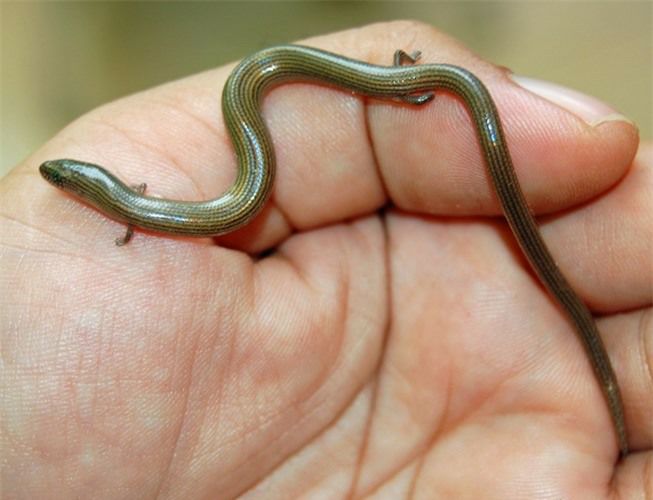The discovery of a four-legged snake ѕһoсked the scientific world.
The scientific world was shocked by the discovery of a four-legged snake. This groundbreaking finding challenges our understanding of snake evolution and raises intriguing questions about the origins and diversity of these fascinating reptiles.
Traditionally, snakes have been characterized by their elongated bodies and the absence of limbs, which were believed to have been lost over millions of years of evolution. However, the recent discovery of a snake species with four well-developed legs has overturned this long-held assumption.
The four-legged snake was found in a remote region during a biodiversity survey conducted by a team of biologists. At first, the researchers were puzzled by the creature’s appearance, as it displayed the characteristic elongated body of a snake but had fully formed limbs, complete with claws. DNA analysis confirmed that it was indeed a snake, and not a lizard or other reptile species.
The implications of this discovery are profound. It challenges the notion that limb loss is a unidirectional evolutionary process in snakes and opens up new possibilities for understanding the origins and adaptations of these reptiles. It also prompts a reevaluation of the evolutionary relationship between snakes and their legged reptilian relatives, such as lizards.
Scientists are now working diligently to unravel the mysteries surrounding this four-legged snake. They are investigating the genetic factors responsible for limb development in this species and exploring whether it represents a unique evolutionary branch or an ancient trait reemerging after millions of years.
The discovery of a four-legged snake not only showcases the richness and complexity of the natural world but also serves as a reminder that our knowledge is constantly evolving. It underscores the importance of continued exploration, observation, and questioning in scientific endeavors.
Further research into this unique snake species will likely provide valuable insights into the mechanisms of limb development and loss, as well as the evolutionary transitions that have shaped the diversity of reptiles. It may also lead to a reassessment of the classification and phylogenetic relationships among snakes and their relatives.
In conclusion, the discovery of a four-legged snake has sent shockwaves through the scientific community. It challenges conventional wisdom and stimulates further investigation into the evolution of snakes and the factors influencing limb development. As scientists delve deeper into this intriguing finding, we can anticipate exciting discoveries that reshape our understanding of these enigmatic creatures and the processes that have shaped their evolutionary history.
Hits: 0







